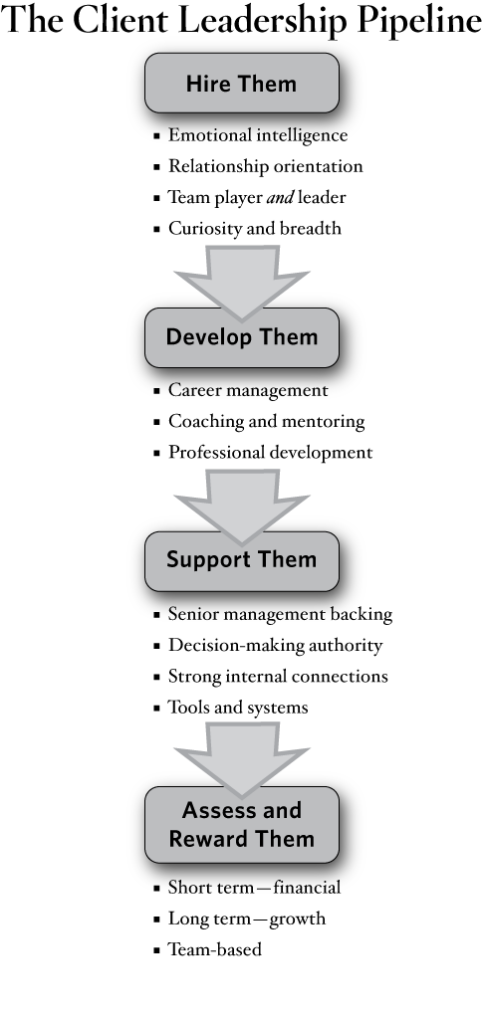What are the essential roles of a client relationship manager? And what skills does he or she need to possess in order to fulfill these roles?
Having studied tens of thousands of partners, managing directors, account executives, and other client-facing professionals in service firms around the world, I have identified six key roles for relationship managers:
- Aspiration Setting: Establishing ambitious, stretch goals for the relationship that are always aligned with the client’s agenda of key priorities and goals.
- Relationship strategy: Deciding what opportunities you should pursue and which individual executive relationships you should invest in.
- Client leadership: Becoming a trusted advisor to the client and a recognized thought leader within the client organization.
- Team leadership and growth: Mobilizing, orchestrating, motivating, and developing the right group of professionals—from across the firm—to serve the client
- Ambassadorship and entrepreneurship: Identifying, mobilizing, and delivering the right people, solutions, resources, and ideas into the relationship.
- Commercial management: Managing pricing, contracting, and negotiating; ensuring firm profit standards are being met; and ensuring that the work product is of high quality and meets the client’s expectations.
For a more detailed description of these roles, and the skills required to support them, see my presentation, here: Relationship Manager Roles
How do you help your relationship managers excel at these roles? See my Client Leadership Pipeline graphic, below.

Related: The 3 Levels of Personal Recognition: Where Are You?

